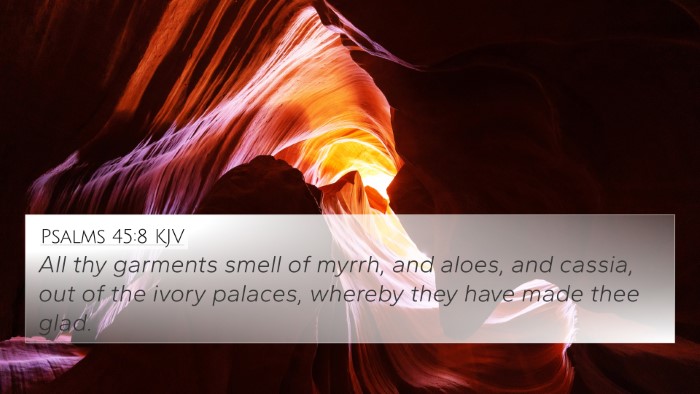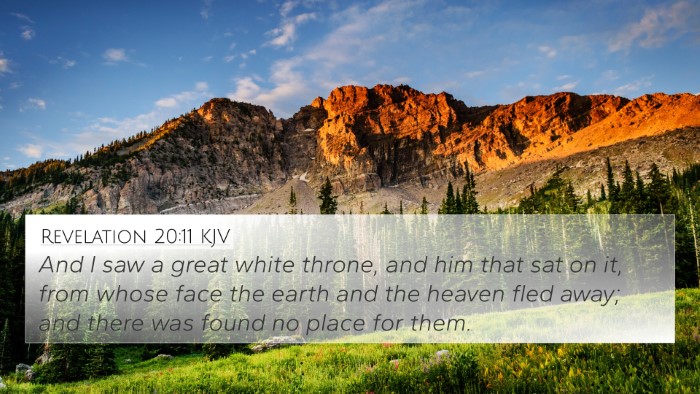Understanding 2 Chronicles 9:17
2 Chronicles 9:17 states, "And the king made of the juniper trees pillars for the house of the LORD, and for the king's house, and harps and psalteries for singers: and there were none such seen before in the land of Judah." This verse emphasizes the grandeur and lavishness of King Solomon’s constructions, particularly regarding the temple of the LORD and his own palace.
Contextual Analysis
This verse is set in the context of the wealth and wisdom of Solomon as detailed throughout 2 Chronicles. Solomon, known for his exceptional wisdom granted by God, was also recognized for his great wealth and building projects, including the famed temple of Jerusalem. This verse underscores his efforts to beautify the worship of God and elevate the cultural and spiritual life of Israel.
Thematic Considerations
- Divine Service and Aesthetics: The construction of beautiful pillars and music instruments highlights the importance placed on worship and the atmosphere surrounding it.
- Symbol of Royal Power: The elaborateness of Solomon’s work can also be seen as a reflection of the greatness of his reign and the wealth of the nation at that time.
- Connection to Worship: The mention of harps and psalteries emphasizes the role of music in worship, a theme that runs throughout the Bible.
Cross-References and Connections
This verse connects to several other passages throughout the Bible. Understanding these links can enrich one's study and appreciation of the text:
- 1 Kings 6:15-22: Details the construction of the temple, providing insight into the materials used and the overall design.
- Psalms 150:3-5: Discusses the use of musical instruments in worship, just as Solomon prepared instruments for the singers.
- 2 Chronicles 3:1: Chronicles the location of the temple, linking back to its importance.
- Isaiah 60:13: Prophetic references to the splendor of Jerusalem highlight the aesthetic importance in worship settings.
- Hebrews 9:24: Introduces the concept of heavenly worship, connecting the earthly temple to eternal realities.
- Exodus 25:40: God intends the tabernacle to be made strictly according to His design, relating to the intentionality in Solomon’s building efforts.
- 1 Chronicles 28:11-12: Solomon received plans for the temple, echoing the divine inspiration in his construction work.
- Nehemiah 12:27: Highlights the role of music and joy in the dedication of the walls of Jerusalem, aligning with Solomon’s musical provisions.
- Amos 6:5: Critique of excessive displays of wealth in worship, offering a contrasting view of Solomon’s practices.
- Colossians 3:16: Encourages the use of music in spiritual contexts, mirroring the intent behind Solomon’s musical offerings.
Insights from Commentaries
Matthew Henry: Henry notes that Solomon’s preparations for worship were both practical and symbolic, indicating that he wanted a place worthy of the LORD's presence and a way to foster genuine worship through music.
Albert Barnes: Barnes emphasizes the importance of the musical instruments Solomon provided, illustrating that the aesthetic quality of worship was significant even in the Ancient Near Eastern context.
Adam Clarke: Clarke analyzes the use of juniper trees, suggesting that such materials point to the region's resourcefulness, marrying natural beauty with divine worship in a profound testimony of faith.
Conclusion
2 Chronicles 9:17 serves not only as a record of historical grandeur but as an invitation for readers to understand the deeper spiritual significance of worship aesthetics, the role of music, and the intentionality behind divine service. By cross-referencing related verses, one can gain a holistic view of worship’s thematic importance throughout the scriptures.
Further Study Tools
For those interested in exploring further, consider utilizing comprehensive Bible cross-reference materials and Bible concordance tools to identify additional themes and connections between biblical texts. Engaging in cross-reference Bible study methods can also provide deeper insights into the interconnected nature of scripture.





